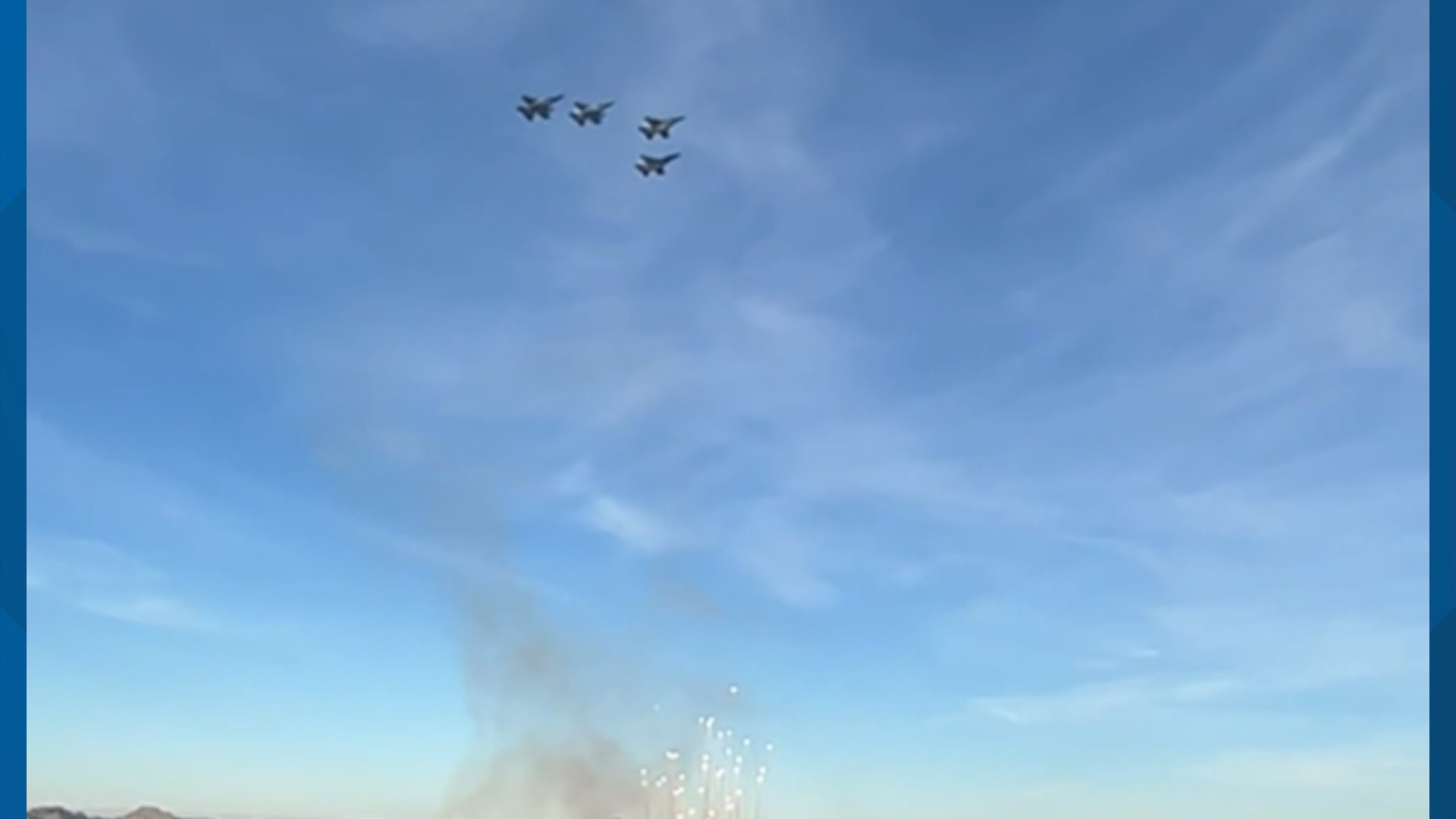PHOENIX — We're back with more flyover coverage. Game 3 involved a four-ship formation of F-35 fighters from Luke Air Force Base. Game 4 brought the A-10 Warthogs out of their den in Tucson. Game 5 brings us F-16C Vipers from the Arizona Air National Guard's Morris Air National Guard Base in Tucson.
What is the F-16C Viper?
The F-16, like the F-35As from the Game 3 flyover, are a multi-role fighter, designed to do lots of jobs — blowing stuff up on the ground fighting other planes in the air. Unlike the F-35s, they lack the stealth technologies that make them hard to see on radar and so are considered "fourth-generation fighters." Regardless, some version of the F-16 has flown in every conflict the United States has been in since the first Gulf War.
General Dynamics' original name for the F-16 was "Fighting Falcon." But that's a lot of words. "Viper" was what the pilots called it because of its curved lines and the large air inlet beneath the plane's nose that someone thought looked like an open snake's mouth. Early difficulties perfecting the plane caused several crashes, which, along with its streamlined shape, earned the plane the dry, dark nickname "Lawn Dart."
You've seen the F-16 in a lot of things. The Thunderbirds, the Air Force's demonstration team, flies white-painted F-16s. It was the star of the ridiculous 1986 movie Iron Eagle where a high schooler steals one to rescue his dad. Like every other plane, it's also been in a Transformers movie.
What does the "C" stand for?
It's the model of the airplane. The F-16A was the original, the F-16B was the two-seat trainer version -- sometimes called "the family version." The F-16C — and it's two-seat trainer version, the F-16D — are the current models. The Air Force upgrades its planes incrementally in what they call "blocks." So a F-16C Block 25 is significantly less advanced than a F-16C Block 42.
How does a flyover work?
The flyover is all about math and communication. The planes will take off from Morris Air National Guard Base in Tucson, or Luke, if they've previously flown there, and will wait to be called in.
An F-16 pilot, or pilots, will be in the stadium talking to the flyover planes about timing. In a perfect world, the planes cross the far edge of the stadium just as the National Anthem ends. It's really a math equation: How long will it take the planes flying X speed to make it Y miles at the right time?
Who will be in the cockpits?
The pilots will be from the 152nd Fighter Squadron, part of the 162nd Fighter Wing of the Arizona Air National Guard based in Tucson.
Arizona sports
The city of Phoenix is home to five major professional sports league teams; The NFL's Arizona Cardinals, NBA's Phoenix Suns, WNBA’s Phoenix Mercury, MLB's Arizona Diamondbacks and NHL's Arizona Coyotes.
The Cardinals have made the State Farm Stadium in Glendale their home turf and the Footprint Center in downtown Phoenix is home to both the Suns and the Mercury. The Indoor Football League’s Arizona Rattlers also play at the Footprint. Phoenix has a soccer team with the USL's Phoenix Rising FC.
The Valley hosts multiple major sporting events on a yearly basis, including college football's Fiesta Bowl and Cactus Bowl; the PGA Tour’s highest-attended event, the Waste Management Phoenix Open; NASCAR events each spring and fall; and Cactus League Spring Training.
Sports
Watch more of the latest sports videos on the 12News YouTube channel. Don’t forget to subscribe!

